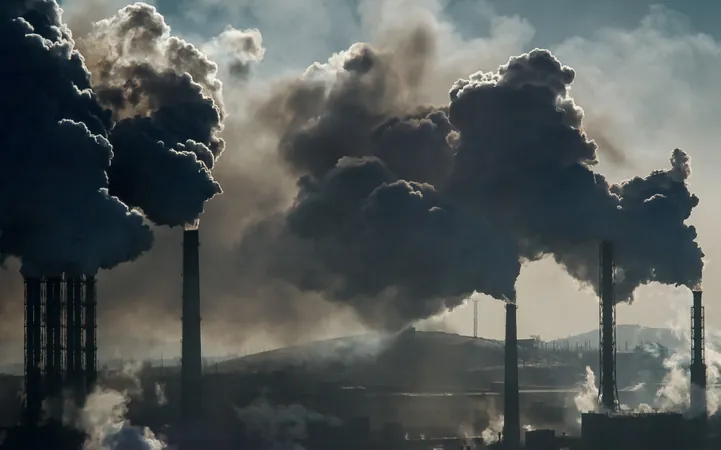
Unlocking the Secrets of Isoprene: New Discoveries Could Transform Our Understanding of Global Aerosol Formation
2025-05-26
Author: Wei
A Breakthrough in Atmospheric Chemistry
Researchers at the Leibniz Institute for Tropospheric Research in Leipzig have made a groundbreaking discovery in atmospheric chemistry, revealing intricate pathways in the oxidative degradation of isoprene, a compound predominantly emitted by deciduous forests. Their findings, recently published in *Nature Communications*, could change our comprehension of aerosol formation globally.
The Role of Isoprene in Our Atmosphere
Isoprene (C5H8) plays a vital role, releasing an estimated 600 million metric tons of carbon into the atmosphere each year. It primarily undergoes gas-phase reactions with hydroxyl (OH) radicals—nature’s oxidative scrubbers. This process generates various peroxy radicals (HO-C5H8O2) that can affect atmospheric chemistry, yet their full reaction pathways remain largely unexplored.
Innovative Experiments Unveil New Product Channels
Utilizing cutting-edge mass spectrometry within a controlled flow system under standard atmospheric conditions, the Leipzig team tracked the formation of peroxy radicals and stable products with unprecedented sensitivity. Their results not only aligned with established research on isoprene degradation but also uncovered new C4- and C5-products, notably the highly oxidized peroxy radicals C5H9O8 and C5H9O9, formed through quick autoxidation.
Dr. Torsten Berndt, who spearheaded the research, remarked, "Although a mere 0.3% yield may seem insignificant, the sheer volume of isoprene emissions makes these products noteworthy on a grand scale."
A Global Perspective: Modeling the Impact
To assess the global implications of these findings, the research team incorporated their data into a comprehensive chemistry-climate model. Shockingly, the model suggests that approximately 4 million metric tons of these highly oxidized isoprene peroxy radicals are generated worldwide each year, rivaling previously considered significant processes from other compounds.
Potential Impacts on Climate and Aerosol Formation
In the atmosphere, C5H9O8 and C5H9O9 radicals predominantly react with nitrogen monoxide (NO) and hydroperoxy radicals (HO2). The reactions with NO yield highly oxidized organic nitrates while the interactions with HO2 remain speculative, necessitating further exploration.
These newly identified oxidation pathways are crucial as they could influence aerosol particle growth and secondary organic matter formation, processes that are tightly interwoven with climate dynamics and the interaction between aerosols and clouds.
A Call for Further Research
The researchers underline the importance of their discoveries by stating that many questions remain unanswered. Understanding how isoprene’s highly oxidized products affect atmospheric processes is vital for grasping their overall impact on global climate.
This research lays the groundwork for future studies, promising to deepen our understanding of complex atmospheric chemistry and its implications for our planet's climate.


 Brasil (PT)
Brasil (PT)
 Canada (EN)
Canada (EN)
 Chile (ES)
Chile (ES)
 Česko (CS)
Česko (CS)
 대한민국 (KO)
대한민국 (KO)
 España (ES)
España (ES)
 France (FR)
France (FR)
 Hong Kong (EN)
Hong Kong (EN)
 Italia (IT)
Italia (IT)
 日本 (JA)
日本 (JA)
 Magyarország (HU)
Magyarország (HU)
 Norge (NO)
Norge (NO)
 Polska (PL)
Polska (PL)
 Schweiz (DE)
Schweiz (DE)
 Singapore (EN)
Singapore (EN)
 Sverige (SV)
Sverige (SV)
 Suomi (FI)
Suomi (FI)
 Türkiye (TR)
Türkiye (TR)
 الإمارات العربية المتحدة (AR)
الإمارات العربية المتحدة (AR)